Three of the best summer recipes to enjoy al-fresco
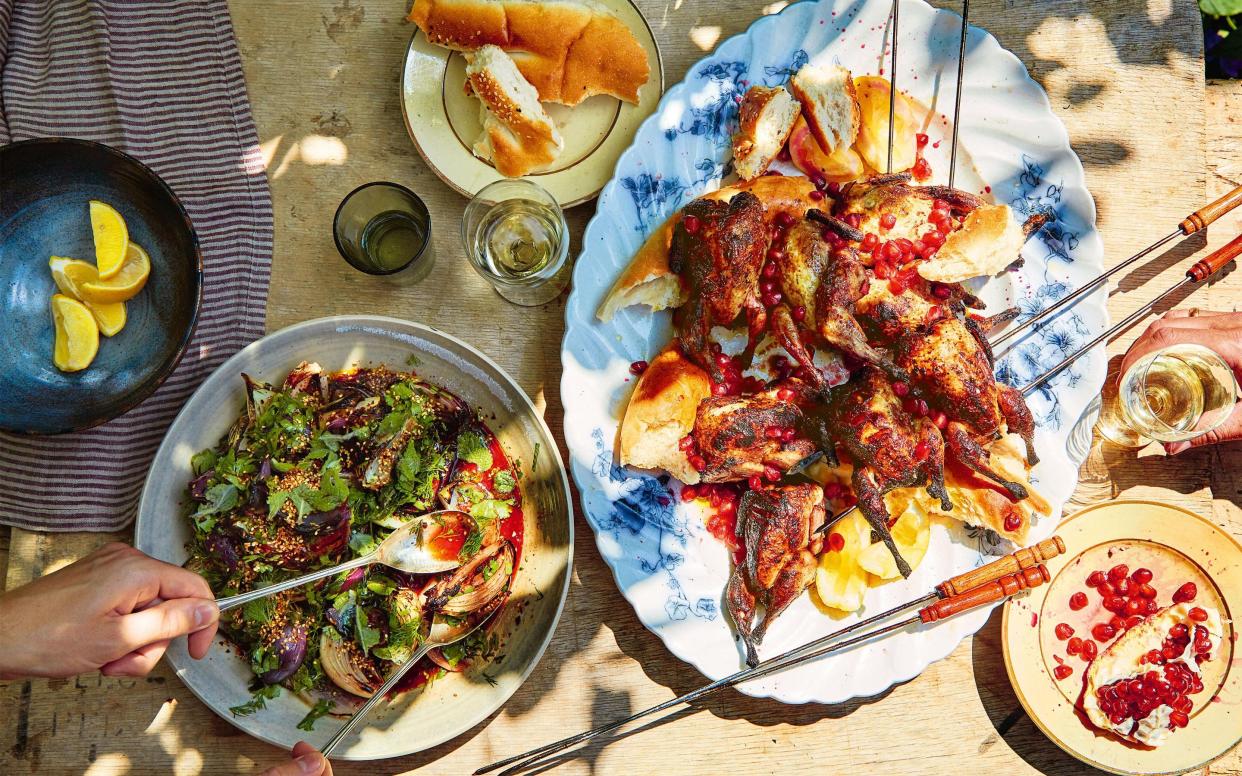
It is somewhat remarkable that this is Debora Robertson’s first proper cookery book. Robertson, a Telegraph columnist on domestic advice and her move to France, has written several books, many of which contain recipes, but Notes from a Small Kitchen Island is ‘the book of my heart’, she says, ‘the book I’ve always wanted to write’.
And it is wonderful. Charmingly miscellaneous in structure, the book is jam-packed with useful tips, from how to get the crispiest skin on a roast chicken to how to host the perfect dinner party.
With inspiration ranging from her favourite Turkish restaurants in east London, to Marseillan, where Robertson now lives, it celebrates the joy of home cooking, and shows how small tweaks can make a dish stand out. These recipes are ideal for an al fresco summer menu, but can be equally enjoyed individually.
Debora’s top tips for kitchen confidence
How to get the crispiest chicken skin
If you can, the day before you want to cook your chicken, remove all its packaging, pat it dry with kitchen paper, then place it in a small roasting tin and return it to the fridge. This helps dry out the skin so it will crisp up beautifully when you cook it. Take the chicken out of the fridge an hour before you want to roast it. By using a tin into which the chicken fits cosily, the juices and fat can accumulate in the bottom to help you make delicious gravy, rather than becoming a burnt-on mess as they do if spread thinly in a large tin.
Get someone to handle the drinks at parties
Delegation not only frees you to commit acts of culinary genius, it can be an enormous benefit to others too. If you’re inviting new people or have a shy guest, getting them to help serve drinks or pass round platters of salami is a great way to get everyone talking without awkwardness or descending into that absolute social null of discussing how you got there and where you parked.
Make your own red pepper paste
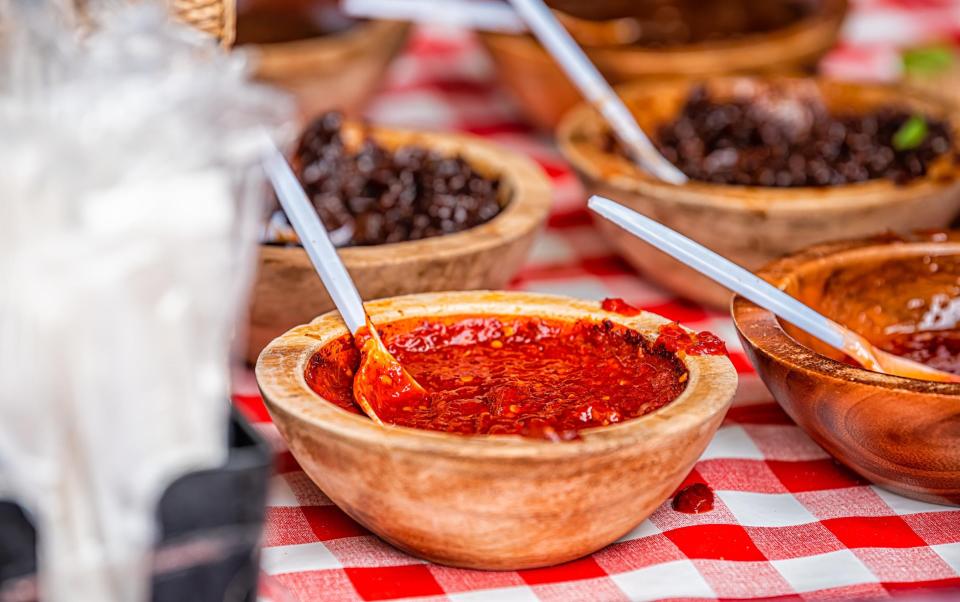
Many Turkish recipes use an intense red pepper paste, biber salçasi. If you can’t get hold of it, substitute a couple of jarred, drained flame-grilled red peppers – about 120g – whizzed together with two tablespoons of concentrated tomato purée, two teaspoons of paprika, a quarter of a teaspoon of cayenne and a pinch of cinnamon. You can keep this sealed in a jar in the fridge for a couple of weeks and use it to perk up all manner of soups and stews – it is particularly good with aubergines.
How to fry onions in real life
Frying onions properly takes time. Building up flavour takes time. To give yourself a head start, try to ensure they are chopped evenly so they will cook at the same speed, but don’t stress out about that too much. To achieve translucent onions, cook them over a medium-low heat, stirring frequently, until they are very soft but haven’t taken on any colour. This should take about 15 minutes. For golden onions, turn up the heat a little to medium, keep stirring so they colour evenly, and keep going for about 20 minutes. Caramelised onions can take about 45 minutes to an hour, depending on the quantity and the size of the pan.
I can’t believe it’s not buttermilk
If a recipe calls for buttermilk and you can’t find any, mix yogurt with a splash of lemon juice, or add a squeeze of lemon to whole milk and let it stand for five minutes.
Making ice cream without an ice cream maker
Pour the chilled ice cream mixture into a shallow, freezer-proof container, cover and put it in the freezer. After 45 minutes, take it out and use a rubber spatula to drag into the middle the bits around the edges that are beginning to freeze. Give everything a really good stir and return it to the freezer. Leave it for 30 minutes or so and repeat.
You’ll probably have to do this two or three more times as it freezes. The results won’t be quite as smooth as if you were using a machine, but you will have ice cream and it will be delicious.
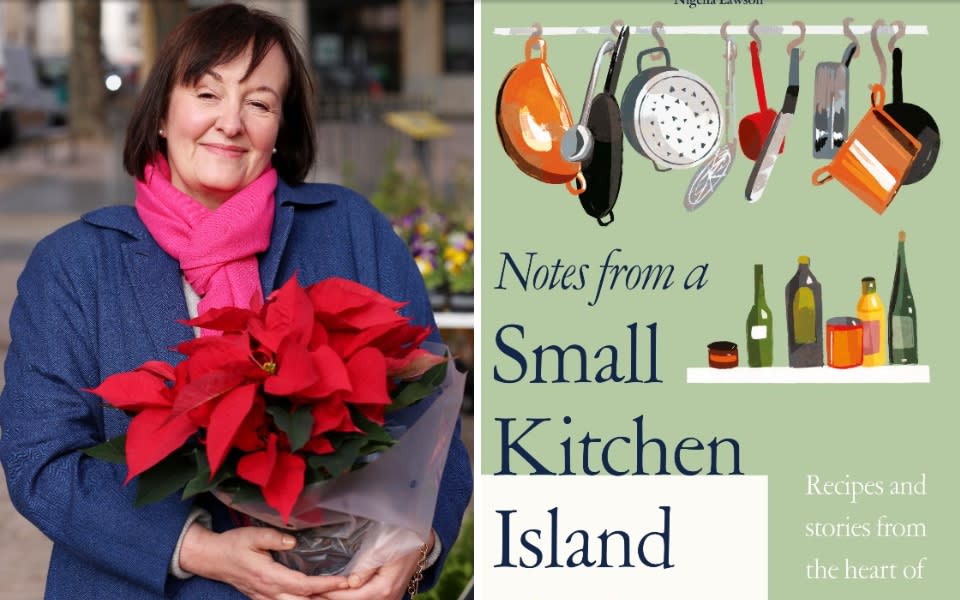
How to cook pasta
To cook pasta properly you need more water and salt than you probably think you do. For perfection, the late, bracingly correct Marcella Hazan had this to say: ‘For every pound of pasta, put in no less than 1½ tablespoons of salt, more if the sauce is very mild and under-salted. Add the salt when the water comes to a boil. Wait until the water returns to a full, rolling boil before putting in the pasta.’ Under-salting is one of the unkindest things you can do to your pasta. Salting it properly elevates the simplest dish to joyful heights.
Run out of (lime) juice?
If your limes aren’t particularly juicy, giving them a 10-second blast in the microwave should help.
Why you don’t need a garlic press
All but the freshest, youngest garlic often has a green shoot, the germ, in the middle, which can give a musty, bitter taste. You need to take it out, particularly if you are going to use the garlic raw in dressings, but I am in the habit of removing it for cooked dishes too. By the time you’ve got out a chopping board, peeled the clove, halved it and removed the germ, you might as well chop it by hand. And the washing up is so much simpler.
Grilled pomegranate quail
This is my version of a dish I always order at one of my favourite Turkish restaurants in Bethnal Green, London. You can cook it under the grill or on the barbecue. I like the quail to be slightly pink in the middle – they can dry out very fast if you’re not careful, as they are so small, so keep an eye on them.
You will need 12 35cm metal skewers – you can usually fit one bird on two skewers (one through the legs, one through the breast). If you’re using wooden skewers, soak them in water for a couple of hours so they don’t burn while you’re grilling. If you plan on a lot of barbecuing, keeping a bundle of soaked wooden skewers in the freezer means you always have some ready to go.
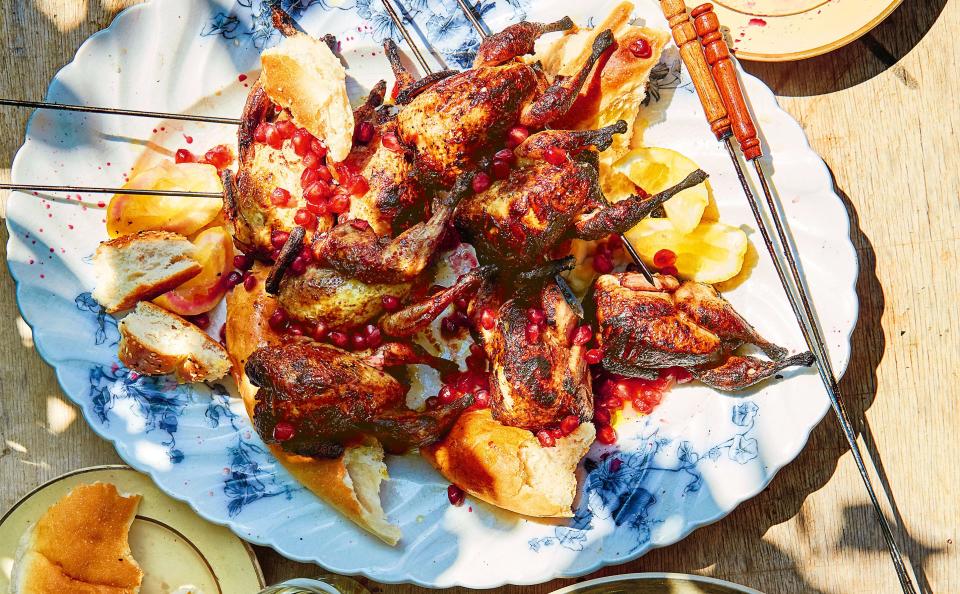
Timings
Prep time: 20 minutes, plus marinating time
Cooking time: 15-30 minutes, plus resting time
Serves
Six
Ingredients
For the marinade
70ml pomegranate molasses
Juice of ½ lemon
4 tbsp olive oil
2 tsp pul biber, or 1 tsp chilli flakes and 1 tsp paprika
2 tsp garlic powder
½ tsp ground cumin
¼ tsp ground cinnamon
For the quails
6 quails, spatchcocked – get the butcher to do this for you if you’re nervous, but it is honestly very simple to do yourself (see below): courage!
Flaky sea salt
To serve
A handful of fresh coriander leaves (optional)
Wedges of lemon
Pomegranate seeds
Crusty bread
A bowl of Greek yogurt, seasoned with salt and a good pinch of dried mint
Method
First, spatchcock the quails by placing them breast-side down. With poultry shears or sharp kitchen scissors, cut along either side of the backbones; remove the bones and offal and discard them.
Whisk together all the ingredients for the marinade in a large bowl with half a teaspoon of salt, then add the quails and turn them over until they’re well coated. Cover the bowl and refrigerate for 2-4 hours. Remove from the fridge an hour before grilling. Push a skewer through the legs of each quail, and another skewer through the wings and breast, ensuring they lie as flat as possible.
Line a grill tray with foil and preheat the grill until it’s as hot as you can get it. You want to grill the birds about 10cm from the heating element. Grill them, bone-side up, for 6-8 minutes, then turn and grill skin-side up until the skin is slightly charred, a further 6-7 minutes, depending on the size of the quail. You may need to do this in batches, depending on how big your grill is.
To barbecue the birds, wait until the coals are covered with a fine layer of grey ash and place the skewered birds on the medium-hot part of the grill, bone-side down. Grill as above, though check for doneness a couple of minutes before you would on your indoor grill.
Let the quails rest for five minutes before sprinkling them with flaky sea salt and arranging them on a platter with the coriander (if using), lemon wedges and pomegranate seeds scattered over the top, and bread and the Greek yogurt on the side.
Lemony roast cauliflower with almonds and curd cheese
I love this combination of spiced roast cauliflower with zingy lemon and sweet, sticky Medjool dates. It’s great as part of a large spread with other salads, but feel free to halve the quantities for smaller groups or midweek dinners – it’s really delicious with lamb chops, or the grilled pomegranate quail above.
I love this combination of spiced roast cauliflower with zingy lemon and sweet, sticky Medjool dates. It’s great as part of a large spread with other salads, but feel free to halve the quantities for smaller groups or midweek dinners – it’s really delicious with lamb chops, or the grilled pomegranate quail above.
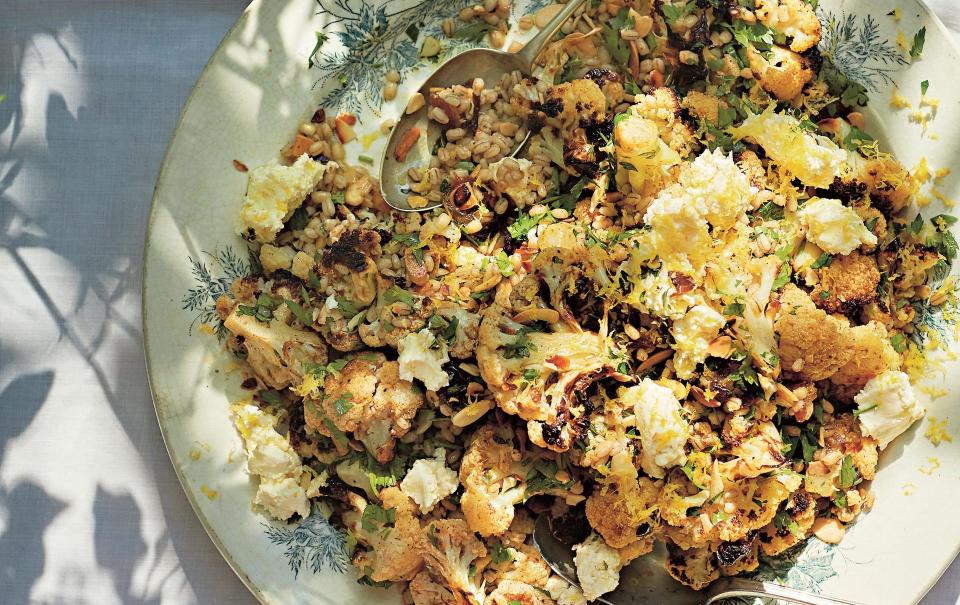
Timings
Prep time: 20 minutes
Cooking time: 40 minutes
Serves
10-ish as a side dish, depending on what else you are serving with it
Ingredients
80ml extra-virgin olive oil, plus more for dressing
Finely grated zest and juice of 2 unwaxed lemons
2 tbsp ground cumin
1 tbsp ground coriander
½ tsp paprika
¼ tsp ground cinnamon
2 large cauliflowers, about 800g each, broken into medium-sized florets, leaves reserved for the deliciousness (see below)
200g farro
About 700ml chicken or vegetable stock (this can be from a stock cube or pot)
150g flaked almonds
100g Medjool dates, stoned and roughly chopped
3 preserved lemons, halved, pips discarded, diced
30g fresh parsley leaves and fine stalks, coarsely chopped
20g fresh coriander leaves and fine stalks, coarsely chopped
To serve
150g curd cheese or ricotta
Finely grated zest of 1 unwaxed lemon
Method
Preheat the oven to 220C/200C fan/gas mark 7. Line two large baking trays with non-stick baking parchment or Silpats.
In a large bowl, whisk together the olive oil, lemon zest and juice, cumin, ground coriander, paprika and cinnamon. Tip in the cauliflower florets and mix well, so everything is coated. I find it easiest to do with immaculately clean hands.
Scatter the cauliflower evenly over the prepared baking trays, season with salt and pepper, and roast for 30-35 minutes, turning once or twice, until the florets are tender and beginning to char around the edges. (While they’re cooking, there are other things to do, so don’t nod off.) If you’re using the leaves, add them 10 minutes into the cooking time.
While the cauliflower is roasting, cook the farro. Rinse it well, bring a pan of well-flavoured stock to the boil and simmer the farro for 25-30 minutes, until it’s cooked but still has a little bite to it. Drain it and leave it to steam and dry out slightly in a colander.
In a large frying pan over a medium heat, toast the flaked almonds until they are just beginning to become fragrant and golden, 3-4 minutes, rattling the pan frequently.
When the cauliflower is cooked, spoon it into a large bowl and toss it with the farro, almonds, dates, preserved lemons and herbs, saving some of the herbs and almonds to sprinkle over the top to finish. If using the cauliflower leaves, add them now too. Taste and add more salt and pepper if you think it needs it.
Arrange the salad on a large platter. Scatter over the remaining herbs and almonds, dot with the curd cheese or ricotta, grate over the lemon zest and trickle on some olive oil just before serving.
Top tip: Do not throw cauliflower leaves away. Sometimes they take up most of the cauliflower and it’s a terrible shame to waste them. Chop the biggest ones into 4cm chunks and keep the smaller, more tender leaves whole. Toss them in olive oil, sprinkle them with salt and roast them at 220C/200C fan/gas mark 7 for about 15-20 minutes, turning once, until the thick stems are tender and the leaves are beginning to char. You can serve them mixed into salad or on their own at another meal.
Plum cake
I am very keen on vanilla and mind terribly that its name has become synonymous with ‘bland’. It’s anything but, and often underused as a background note. I want to know it’s there. In this cake, I use vanilla sugar and extract, belt and braces. You can serve this warm with cream or custard, or cold with crème fraîche (or whipped cream, or ice cream, or whatever you want really – I’m not the boss of you).
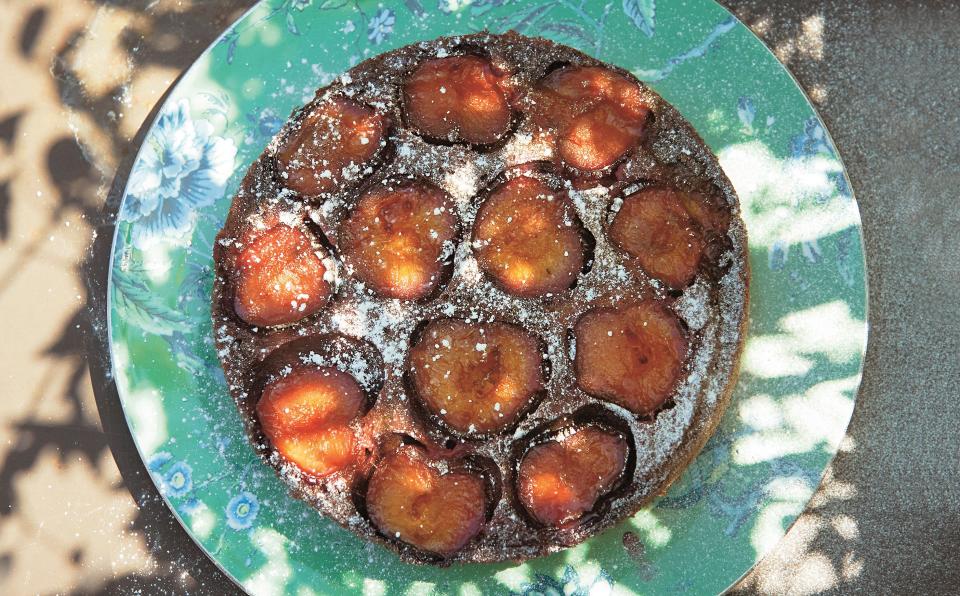
Timings
Prep time: 20 minutes
Cooking time: 55 minutes, plus cooling time
Serves
Six to eight
Ingredients
200g unsalted butter, room temperature, plus a little for greasing
250g caster sugar, vanilla sugar if you have it (see tip, below)
4 eggs, separated
1 tbsp vanilla extract
250g plain flour
2 tsp baking powder
200ml pudding wine, such as muscat, or Noilly Prat Ambré if you have it
Icing sugar for dusting, if you like
For the plums
5-6 plums, or enough to line a 23cm tin when halved, just ripe, not too soft
3 tbsp demerara sugar
Method
Preheat the oven to 170C/150C fan/gas mark 3. Lightly grease a 23cm springform baking tin and line the bottom. Butter the parchment.
Halve the plums along the seam and stone them. Toss them with the demerara sugar and line the tin with them, cut-side down. Try to cram them as closely together as possible.
Beat together the butter and sugar until pale and light. Add the egg yolks one at a time, beating well after each. Beat in the vanilla.
In a separate bowl, whisk together the flour, baking powder and a good pinch of salt. In another scrupulously clean bowl, whisk the egg whites until they form peaks. Add the wine and the flour mixture to the butter mixture in alternate batches, starting and ending with flour (flour/wine/flour/wine/flour), folding in well with a spatula after each batch. Fold in a third of the egg whites with a spatula to lighten the batter, then stir in the rest, lifting the batter with the spatula and gently folding it into the mixture. It should be well combined, but you want to keep in as much air as possible.
Spoon the mixture over the top of the plums, smooth the top with a spatula, place the tin on a baking tray and bake for 55 minutes, until a skewer inserted into the middle of the cake comes out clean. Depending on your oven, it may take a little longer. Put it back in and test every five minutes.
Place the cake tin on a cooling rack. Run a palette knife around the sides of the tin but leave it to cool for 15 minutes before releasing the sides and inverting it on to a plate. Gently remove the base of the tin and the baking parchment, and dust the cake with icing sugar if you like.
How to make vanilla sugar: put a few split vanilla pods into a jar with some caster sugar and seal. Leave for a couple of weeks for the flavour to develop. You can keep topping up the sugar, and I use recycled pods too – any pods I’ve used to infuse custards or sauces, I simply rinse and dry out, then add to the sugar jar. My jar is probably 20 years old now and still going strong.
Notes from a Small Kitchen Island, by Debora Robertson, is published on 7 July (Michael Joseph, £26). Order your copy from the Telegraph Bookshop.
For regular French-inspired recipes visit Debora Robertson's Substack here

 Yahoo Movies
Yahoo Movies 
